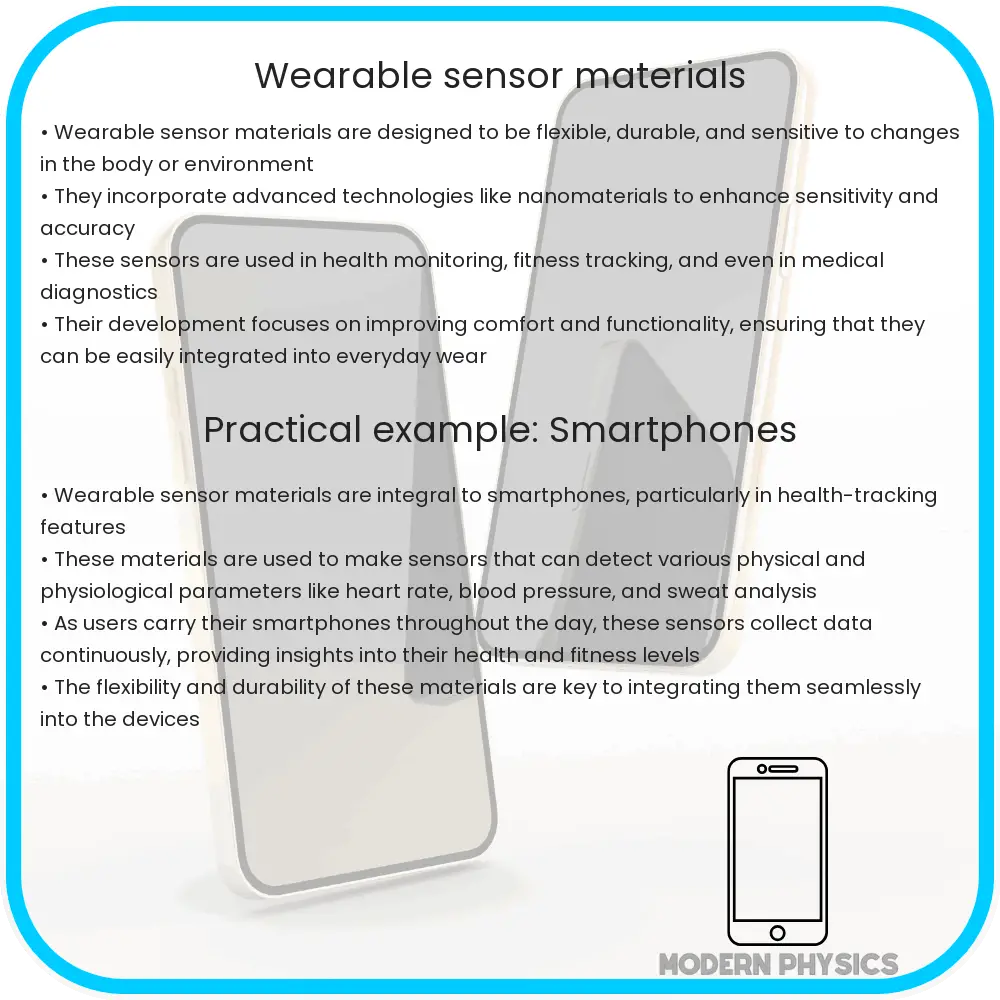Explore the properties and innovations of materials used in wearable sensors, focusing on durability, flexibility, and sensitivity for effective daily use.

Introduction to Wearable Sensor Materials
Wearable sensors are rapidly advancing the frontier of consumer electronics, healthcare monitoring, and fitness tracking. The core of their functionality lies in the materials used to construct them. The ideal wearable sensor materials must exhibit a unique blend of durability, flexibility, and sensitivity, which enables them to operate effectively under the mechanical stresses of daily human activity while providing accurate and reliable data.
Understanding Durability in Wearable Sensors
Durability is crucial for wearable sensors because these devices are typically subjected to various physical stresses such as stretching, bending, and impact. Materials used in these sensors need to withstand these forces without degrading or losing functionality over time. Commonly, materials like polydimethylsiloxane (PDMS) and other silicon-based polymers are used due to their robust nature and resistance to environmental factors like moisture and UV light.
The Importance of Flexibility
Flexibility is another critical property for wearable sensor materials. It ensures that the device can conform to the complex contours of the human body and maintain comfort during movement. This property is often achieved through the use of elastomers and flexible conductive materials. For instance, textiles integrated with silver fibers offer excellent flexibility while enabling electrical conductivity necessary for signal transmission.
Sensitivity of Wearable Sensors
Sensitivity in wearable sensors refers to the ability of the device to detect and accurately measure physiological signals such as pressure, temperature, or biochemical components in sweat. The materials used must provide a high degree of transduction capability for these measurements. Graphene, for example, is highly valued in this respect due to its extraordinary electrical and mechanical properties. Its sensitivity to changes in its environment makes it ideal for applications in detecting subtle physiological changes.
Material Innovations in Wearable Sensors
Recent innovations in material science have led to the development of hybrid materials that combine durability, flexibility, and sensitivity. These innovations include the incorporation of nanomaterials like carbon nanotubes and metallic nanoparticles into traditional polymers. Such combinations not only enhance the mechanical properties but also improve the electrical conductivity and sensitivity of the sensors.
- Carbon Nanotubes: Known for their strength and electrical properties, carbon nanotubes enhance both the durability and sensitivity of wearable sensors.
- Metallic Nanoparticles: These particles can be added to polymers to improve electrical conductivity without significantly compromising flexibility.
Integration of Electronics with Flexible Materials
Integrating electronic components with flexible materials poses challenges, particularly in maintaining performance while ensuring that the electronics do not crack or break under strain. Techniques like the use of flexible printed circuit boards (PCBs) and the embedding of thin silicon chips within flexible layers are commonly employed solutions. These methods allow sensors to remain functional across a range of human activities.
Application in Real-world Scenarios
The practical applications of wearable sensors are extensive and impact various sectors significantly. In healthcare, for instance, wearable devices equipped with advanced sensor materials can continuously monitor vital signs like heart rate and blood oxygen levels, providing critical data for patient management. In the realm of fitness and sports, these sensors help athletes optimize their performance by monitoring physical activities and physiological responses in real time.
Future Trends and Challenges
As the technology progresses, the future of wearable sensors looks promising yet challenging. One of the main challenges lies in further improving the longevity and accuracy of these devices, especially in harsh environmental conditions. Additionally, as data privacy and security concerns grow with the increase in data-sensitive applications, developing secure wearable technologies is becoming crucial.
Advancements in material science could lead to even more sophisticated wearable sensors. Researchers are exploring biomimetic materials that not only mimic the properties of human skin but also have self-healing capabilities, potentially revolutionizing the durability and functionality of wearable devices.
Conclusion
The evolution of material science plays a pivotal role in the development of wearable sensors, guiding the integration of durability, flexibility, and sensitivity into devices that seamlessly fit into our daily lives. Material innovations, such as the use of carbon nanotubes and metallic nanoparticles, continue to push the boundaries of what these devices can accomplish. Looking towards the future, the challenge will be to balance these enhancements with the imperatives of eco-friendly manufacturing processes and stringent data security measures. Nonetheless, the trajectory of wearable sensors is marked by a promising synergy of science and technology, aiming to enhance human life in myriad ways.
